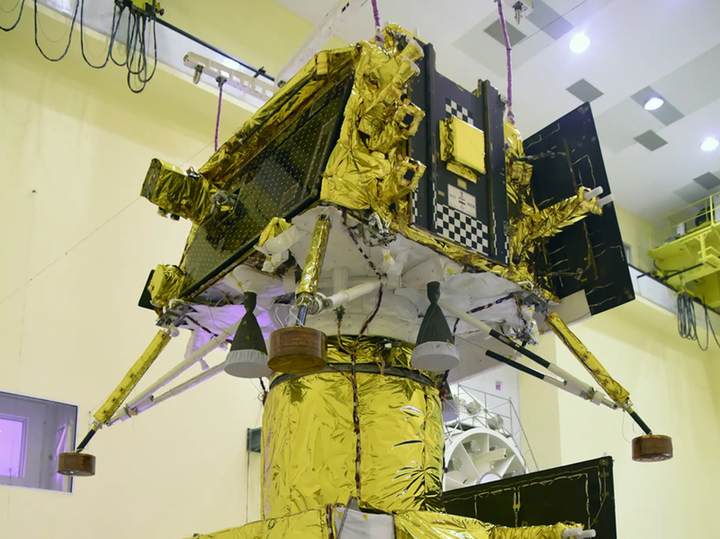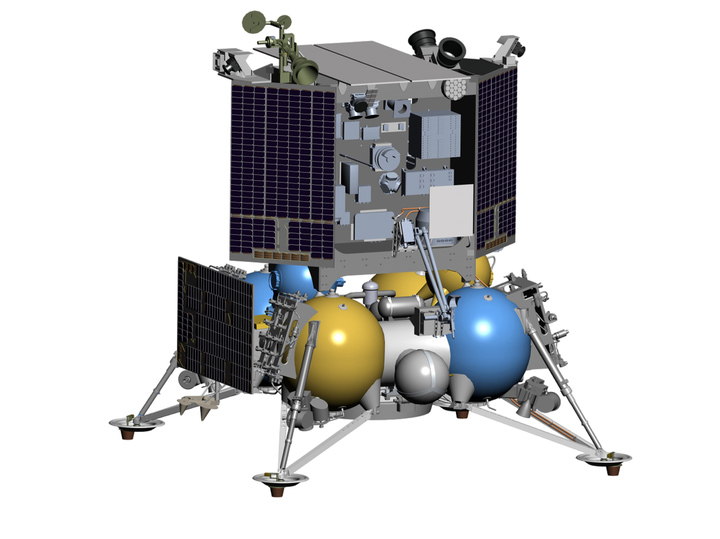The expert compared the Russian “Luna-25” and the Indian “Chandrayan-3”
[ad_1]
The Russian automatic station “Luna-25”, launched to the natural satellite of the Earth on August 11, is still moving behind the Indian apparatus “Chandrayan-3”, launched there on July 14. Both, let me remind you, are heading for the polar region, where no one has landed yet. You and I have witnessed the “lunar race” in the truest sense of the word, although the creators of space technology do not like such a comparison and, in general, any escalation of emotions in this subtle sphere. Therefore, we will simply analyze the current potential of states in the field of lunar exploration together with independent space expert Igor Lisov.
– Igor, how did it happen that Luna-25 and Chandrayaan-3 ended up almost at the same time and on the same flight path to the Moon?
– Of course, this is a pure coincidence. The Indian Space Research Organization (ISRO), like Roscosmos, planned to launch its lunar station several years earlier. First – in 2020, then the date was repeatedly postponed. According to the data for 2022, ISRO even wanted to postpone the mission to a later date – to the summer of 2024, but in the end decided to launch in 2023. For the same year, Roskosmos managed to plan the launch of Luna-25.
– As we know, the flight of the Indian station is scheduled for 40 days compared to the 10-day flight plan of Luna-25. Why such a difference?
– The long journey of Chandrayaan-3 in ISRO is explained by a more economical method of delivering the device, which, according to them, is controlled mainly by the gravitational forces of the Earth and the Moon, while the Russian one was launched on a shorter lunar trajectory by a fairly powerful rocket.

The configuration and tasks of Chandrayaan-3 almost repeat the Chandrayaan-2 of 2019. As far as we remember, that mission ended in a hard landing and loss of communication with the device. Therefore, the Indians decided to repeat the task this year.
– “Chandrayan-3” carries on its board a small lunar rover “Pragyan”. Can it be compared with our “Luna-17” of 1970 and the Chinese “Chang’e-3” of 2013, which at one time also made the first landings with the release of lunar rovers?
– Theoretically, yes, but I would not do it, because after the break since 1976, when we sent our Luna-24 apparatus to the Moon, a lot has changed. Since the 2000s, almost all space agencies, including Roskosmos, have essentially started all over again. Today, perhaps, there is not a single specialist left who assembled our “extreme” Luna-24 47 years ago. By the way, the Indian lunar rover “Pragyan” (Knowledge) was originally planned for our “Luna-27” – such an agreement was reached in 2011 under the former head of Roscosmos Anatoly Perminov. But, having become convinced over time that we were harnessing for too long, the Indians decided to send their rover to the moon on their own.
– So, apart from the absence of a lunar rover in our mission, in general, the tasks of Luna-25 and Chandrayaan-3 are similar: is it a soft landing, extraction of regolith samples and their analysis?
– Yes, judging by the declared programs of one and the other. They do not have fundamental differences. To the tasks you have listed, I would also add the study of dusty plasma.
Help “MK”
List of instruments on board Chandrayaan-3
– Langmuir probe RAMBHA-LP for plasma research;
– a device for measuring the thermal conductivity of soil ChaSTE (thermal probe immersed in regolith to a depth of 10 cm);
– ILSA seismograph;
– LRA Corner Reflectors for Lunar Laser Ranging provided by NASA$
– LIBS laser spectrometer and APXS alpha-X-ray spectrometer for determining the elemental composition of rocks (both are installed on a six-wheeled lunar rover).

List of instruments on board Luna-25
– ion energy-mass analyzer ARIES-L for measuring the composition of the lunar plasma-dust shell;
– ADRON-LR neutron and gamma detector for studying the elemental composition and hydrogen content in regolith;
– BUNI, providing collection, storage and transmission of telemetric scientific information;
– LAZMA-LR – laser mass spectrometer for measuring the chemical, elemental and isotopic composition of regolith samples;
– LIS-TV-RPM – an infrared spectrometer for studying in the visible and infrared ranges the mineralogical composition of the surface layer of the Moon’s regolith and the water content in it;
– PmL – dust monitor for studying the physical characteristics of the lunar dusty exosphere;
– LMK – a manipulator arm with a range of 1.5 meters for taking soil samples from a depth of up to 40 cm and delivering them to the LAZMA-LR analytical device.
– STS-L – a television system for panoramic shooting of the surface in the landing area.
– Do the Indians plan to return the soil to the Earth, as Soviet scientists did in 1970?
– I have not heard of such plans.
– It turns out that in the latest space history, the soil from the Moon was left to Earth only by the Chinese in 2020?
– Yes, then the Chang’e-5 station delivered about 2 kilograms of regolith from the visible part of the Moon. In the near future they plan to leave the soil on its reverse side.
– Their Yutu-2 lunar rover, which was landed there, on the back side in 2019, is still “alive”?
– Yes, for the fourth year (total 1.5-2 kilometers) it has been moving towards the north-west. They asked him to hike to interesting geological objects, they examine each stone for their own pleasure.
– Let’s return to our stations Chandrayaan-3 and Luna-25 flying one after another. They would theoretically be able to “see” or take pictures of each other.
– Don’t think. They don’t have much time for such “pranks”.
Meanwhile. On August 14, the Space Research Institute of the Russian Academy of Sciences completed an express analysis of telemetry and measurement data from scientific instruments aboard the Luna-25 automatic station, performed on August 13, 2023 at a distance of about 310 thousand km from the Earth. All instruments showed full operability and readiness for lunar exploration.
[ad_2]
Source link








